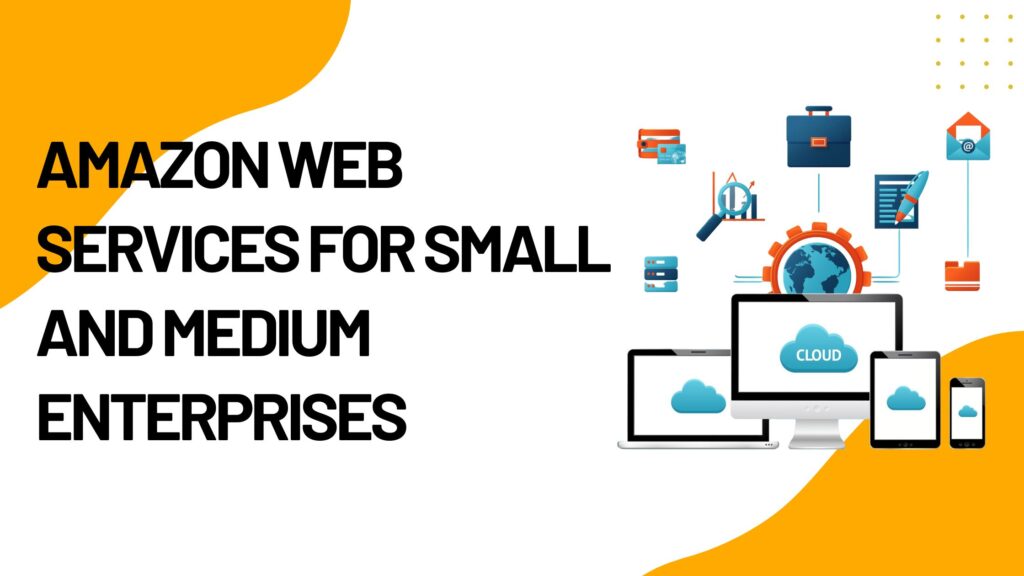
Tips for Getting Started with Amazon Web Services for Small and Medium Enterprises
Amazon Web Services (AWS) has changed the game for small and medium enterprises (SMEs). Powerful solutions available on AWS that are cost-effective, scalable, and adaptable make it possible for small and medium enterprises. However, venturing into AWS can be daunting to those unfamiliar with cloud computing. Here are tips to help SMEs navigate AWS and get the full potential of using this service:
8 Tips for Getting Started with Amazon Web Services for Small and Medium Enterprises
-
Know your business needs
Before getting AWS you need to consider your needs. AWS has several services related to computing, storage, and databases. All these cannot be applied in your organization. Start with what you need. Do you need any of the following:
- Is data storage a problem for you?
- Do you want improved security for your data?
- Is scaling up a challenge for you at times?
By knowing your needs, you can focus on AWS services that solve these problems without overpaying for features you don’t need.
-
Start Small and Scale Gradually
AWS is designed to scale with your business. SMEs often fear the high cost of cloud services, but with AWS’s pay-as-you-go pricing model, you only pay for what you use. Start with the essentials, such as:
- Amazon S3 for secure storage.
- Amazon EC2 for elastic computing power.
- AWS Free Tier will experiment with risk-free services.
As your business scales, you can incrementally add sophisticated features such as machine learning tools or serverless computing.
-
Use the AWS Free Tier
AWS offers Free Tier, meaning SMEs can test all its resources without any fees. The best way a beginner should experiment and be able to identify which is the perfect service for himself is via this program. Services like Amazon S3, EC2, and Lambda are free, with some usage up to 12 months and certain limits.
Use this trial time to learn the platform, conduct a few small-scale tests, and prepare your team for the full-scale deployment when ready.
-
Invest in Training and Resources
AWS is an enormous platform, and the proper use of this requires knowledge and expertise. Think of investing in training programs for your team. AWS offers several resources, including:
- AWS Training and Certification: Structured courses for beginners and advanced users.
- AWS Documentation: Detailed guides for each service.
- AWS Support Plans: Technical support tailored to your business needs.
Outfitting your team with the skills required will help diminish the learning curve and unlock the full potential of AWS.
-
Secure and Comply
SMEs will always care about data security. AWS has the best security, but it’s your responsibility to apply it appropriately to your business. These are the best practices:
- Make use of IAM for user access control.
- Monitor your AWS environment with tools like AWS CloudTrail.
- Enable data encryption for sensitive information using AWS Key Management Service (KMS).
- Keep up to date with compliance requirements for your industry.
These measures ensure your business is in line with security standards and protect the trust of your customers.
-
Automate Processes with AWS Tools
Automation is one of the major advantages of AWS: it saves time and reduces human error. SMEs can automate repetitive tasks like:
Backups: Use AWS Backup for automated, scheduled data backups.
Infrastructure Management: AWS CloudFormation streamlines resource provisioning.
Monitoring: Automate alerts and diagnostics with Amazon CloudWatch.
Automation not only enhances productivity but also enables your team to focus on strategic work.
-
Monitor Costs and Optimize Usage
Cost management is also required for AWS. While its pay-as-you-go model is cost-efficient, improper usage will result in unexpected expenses. Use the following tools to monitor and optimize costs:
- AWS Cost Explorer: Analyze spending patterns and forecast future costs.
- AWS Budgets: Set budget limits and receive alerts for overspending.
- AWS Trusted Advisor: Optimize performance and reduce wasteful expenditures.
Regular monitoring of usage prevents unnecessary costs and effective use of resources.
-
Seek Professional Support
For SMEs without in-house expertise, working with AWS can be overwhelming. Consider partnering with a cloud service provider or AWS consultant who can guide you through the process. They can assist with:
- Setting up the right infrastructure.
- Migrating existing workloads to AWS.
- Managing and optimizing your AWS environment.
This partnership allows you to focus on core business functions while leaving the technical aspects to the experts.
Conclusion
Getting started with AWS can revolutionize how small and medium enterprises operate, providing scalability, flexibility, and cost efficiency. By starting small, prioritizing security, and leveraging AWS tools, SMEs can create a robust digital foundation for growth.
We here at GrowithAmazon specialize in supporting SMEs on their journey with AWS. From identification of the best services that suit your needs to effective cost management and security measures, our expertise ensures that you can use AWS properly to drive your business forward. Let’s help you win in the cloud!


